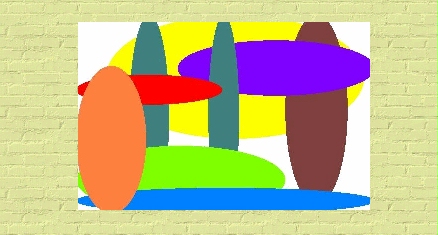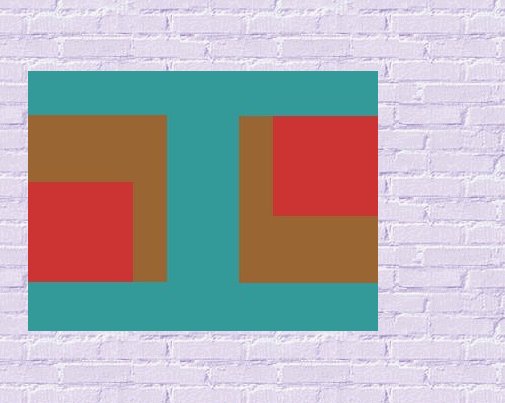Joseph Albertson
 Homage to the Rectangle, 1965 The dynamism of color relationships formed the core of Albertson's creative enterprise. He favored a very disciplined approach to composition. His works, like Homage to the Rectangle, explore permutations of color, form, and perception. For each painting he uses a very restricted visual vocabulary. As a young man, the Cubists inspired him. Albertson became a prolific artist, known primarily for his Homage to the Rectangle. Although he didn't like style category labels, the art community credits him with influencing the movements of Geometric Abstraction and Minimalism to some degree. He was also one of the progenitors among modern artists to investigate psychological effects of space color. The question of the nature of perception fascinated him.
 Homage to the Circle, 1967 His methods were both shocking and innovative. You might well ask why. It is simply because he eliminated copying from nature and from other artists. His goal was to create an attunement or close investigative relationship between the artist and the work and to exclude anything that might interfere with this synchrony. In Homage to the Circle we see pure form and color that creates art that bears no characteristics of the time or place in which it was made. We see juxtaposed large and small circles, often closely related, to create the sort of highly charged rhythm that became a pre-occupation of his work. His colorful and imaginative paintings take off in new directions, with bold abstract oils that often used unmixed paint, straight from the tube, to create powerful statements. Albertson was a major supporter of the movement towards abstraction, with increasingly hard edges. In his work he sought to illustrate reversed grounds, transparencies, space, and vibrating boundaries.
 Homage to the Elipse, 1969 Homage to the Elipse marks the beginning of a new oeuvre for Albertson. From 1969 onward, Albertson's work seems to have more diversity in its coloration and form. A more generalized form opens up a world of innovation and freedom.
 Dueling Squares, 1972 Dueling Squares demonstrates many of the points about color effects and mutability with which Albertson was becoming increasingly preoccupied, the same exact paint was made to look different in different settings. Equal quantities of various colors sometimes gives the illusion of being larger or smaller than one another or perhaps darker or lighter as one gazes alternately from left to right. The motion of this panels is simultaneously two-dimensional and three-dimensional, moving to the left and right of the flat surface and at the same time penetrating its depths. The work is both optically entertaining and intensely poetic, diverting and at the same time profound. |